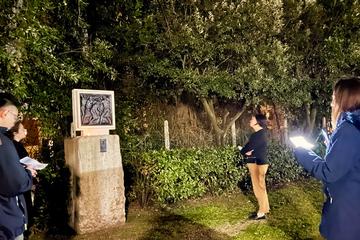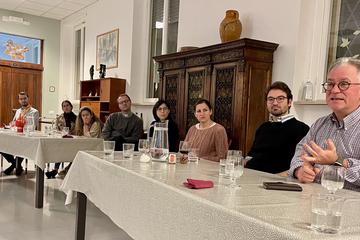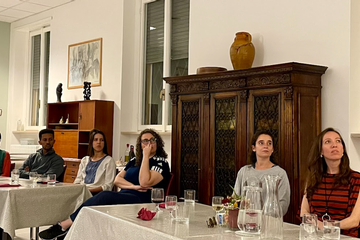
By Elena Dini
ROME — Rebecca Eisenstadt is spending a semester in Rome as a recipient of the Brenninkmeijer-Werhahn Fellowship at the Pontifical Gregorian University. She and her family moved from the United States to Israel, where she grew up in the Jezreel Valley, located between Nazareth and Haifa. She then moved to Jerusalem to study archeology at The Hebrew University, where she is completing her master’s degree. Below, she shares her research and experience in Rome to date.
What is the focus of your academic research?
I am an archeologist specializing in Roman-Byzantine archeology, and currently working on my thesis research. The topic of my master’s thesis is the reconstruction of the liturgical furniture from a church in the ancient town of Sepphoris in Galilee. The research I am conducting incorporates a variety of fields: Byzantine archaeology, Christian art, and Christian studies, with an emphasis on early Christianity and Byzantine liturgy.
Why are you so interested in the Byzantine period, liturgy, and Christian presence?
Very early on in my studies, I was enchanted by the Byzantine period, above all by its imperial aspects. Most archeology concentrates on Jewish aspects in Israel, but when I started digging in Sepphoris, there were also churches. This is when I gained more interest and wanted to learn more about Christianity. When you are in front of a fragment of liturgical furniture, you might go with an art history approach, but this did not interest me. I felt I needed to know more about Christian theology, since so much of it is involved in sacred art. In archeology we work with matter, in my case with stone. I believe that without knowledge and encounter with the liturgy, theology, and spirituality, that stone might almost remain meaningless and lifeless.
Why did you decide to come to Rome?
Rome and the program I entered were intriguing for me for a few reasons. Firstly, since my first year in my B.A., I studied the archeology of Rome. Living here and having the opportunity to visit so many archeological sites in Rome and Italy is not only fun for me, but I see it as an important part of my schooling. The whole essence of archeology is the sites, not only the library. Similarly, I see my encounter with Christianity and the Catholic Church in particular. Living here in Rome summons unique and daily experiences that are also a form of learning, whether it is learning in the academic form or at the human level of knowing and getting to know a variety of people from different backgrounds.
You are living at The Lay Centre. What is your experience in this culturally and religiously diverse community?
I am very happy to have the opportunity to live at The Lay Centre and to be part of this community. I am convinced that staying at The Lay Centre paints my stay in Rome completely different colours. One of the special traits of The Lay Centre is the diversity of students and researchers staying here that creates an interesting community. So, in many ways my experience here in Rome is unseparated from the experiences and friendships that I have made at The Lay Centre. The opportunity to live in a Catholic community that has the openness and acceptance of other religions and communities is not only heart-warming, but it makes for an ongoing learning opportunity.
Could you share a memory you particularly hold dear of these last few months in Rome?
It’s hard for me to point out one memory or experience. But, of course, one of the exciting things I took part in was the Consistory and the creation of 10 new cardinals. This was in my first week in Rome and the honour and excitement to participate in such an important occasion left me with a great impression. I also took the chance of doing some visits outside of Rome, together with some Lay Centre friends, and the one to Ravenna was really special.
Hanukkah is approaching Dec. 22. Could you tell us more about this festival and how you live it?
On Hanukkah, we celebrate the revolt of the Maccabees against the Greeks. Hanukkah is a special holiday, since it is not a biblical holiday. For this reason, the custom of this holiday is not around the prayers at the synagogue but celebrations of the lighting of the menorah or “hanokia,” the nine-branched candelabra that is lit in homes during Hanukkah. As part of the holiday, we come together every night, light the candles of the menorah, sing and eat, of course! Usually every night you are invited to a lighting with other friends and family. This is a fun time of year, especially in Jerusalem, where you can walk through neighbourhoods, hear the singing, and see the lit menorahs on the windowsills.
This year, I am organizing a little festivity for Hanukkah here at The Lay Centre. We will read texts exploring the different meanings of Hanukkah and its cultural side. We will also have “sufganiyot,” which are round jelly doughnuts that are the typical sweets for this festival.


